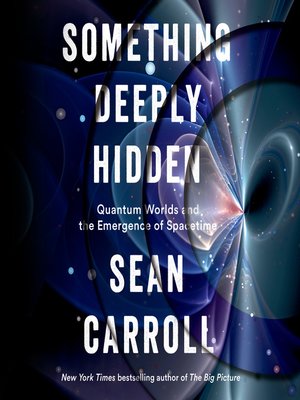

At its essential kernel, this is the “Many Worlds” idea, that the resolution of each quantum wave function splits off a separate reality, what Carroll refers to as a ghost world. In reference to the famous cat, a wave function collapses to a set of facts in which the observer has opened the box and the cat inside has died a gruesome, horrible death, but there’s a wave function collapse in which the observer has opened the box and been disappointed to find the cat still alive. Schrödinger’s equation describes the wave functions of quantum mechanics, and Carroll stresses, in a continuation and augmentation of earlier physicists such as Hugh Everett, that includes the collapse of those wave functions. “To a physicist,” Carroll writes, “a good equation makes all the difference.” In Something Deeply Hidden, the equation Schrödinger developed to describe such wave functions rules the discussion (the book helpfully provides a stripped-down layman’s version of this equation, which will thoroughly baffle most of those laymen). Carroll’s contention is that it’s not just a question of the poison, the cat, and the box the observer is part of the same wave function affecting everything else.

The central unnerving contention of quantum physics is that such a comfortable Newtonian world is at best an illusion.

The problem with the thought experiment, Carroll maintains, is that only the cat represents the quantum interpretation of reality the observer deciding whether or not to lift the lid of the box is still existing very comfortably in the classical Newtonian world we see all around us. The physicist Erwin Schrödinger came up with his famous thought experiment as a way of illustrating one of the many peculiarities of quantum mechanics, and the cat in the box provides Carroll with a very well-known hypothetical to correct out of existence. Its reality will only ‘collapse’ into one alternative or the other upon being observed. An outside observer will only know which fate is real by opening the box before that, the cat is in something called superposition, potentially either dead or alive. If no radioactivity is detected, the cat survives and may live in ill-tempered indolence for many years. If a monitor inside the box detects radioactive energy, the vial is shatters and the cat dies a slow, horrible death. In the simplified version, and you know you’re in the deep end of the pool when even the thought experiment needs to be simplified, there’s a cat locked in a box with a vial of poison and a radioactive source. When attempting to understand Sean Carroll’s new book Something Deeply Hidden: Quantum Worlds and the Emergence of Spacetime, we might as well start with every dog-lover’s favorite thought experiment: Schrödinger’s Cat.


 0 kommentar(er)
0 kommentar(er)
